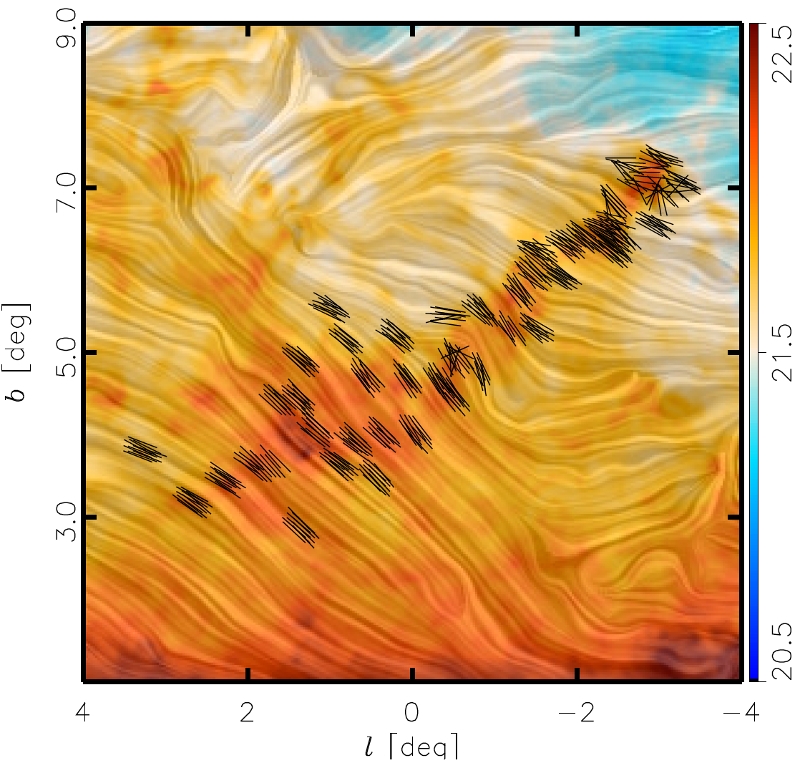| EPoS Contribution |
|
The magnetic field morphology in nearby molecular clouds
Juan-Diego Soler CEA/Saclay, Paris, FR | |
| Within four nearby (less than 200 pc from the Sun) molecular clouds we evaluate statistically the structure of the interstellar magnetic field projected on the plane of sky inferred from the polarized thermal emission of Galactic dust observed by Planck at 353 GHz and from the polarization of visible/NIR light from background stars. First, we study the structure of the magnetic field within the area covered by a Planck-sized beam and evaluate the effect of background polarized emission. Second, we use the second-order structure function of the orientation angles to quantify the differences in the magnetic field morphology derived with each technique at comparable scales. Last, we discuss the implications of this study in previous analysis of the magnetic field morphology by Planck collaboration, where we found a change in the relative orientation between the magnetic field projected on the plane of sky and the gas column density structures. In simulations of magnetohydrodynamic turbulence in molecular clouds this trend in relative orientation is a signature of Alfvenic or sub-Alfvenic turbulence, implying that the magnetic field plays a significant dynamical role in the dynamics of the gas at the scales probed by Planck. | |
 | |
| Caption: Magnetic field and column density measured by Planck towards the Pipe nebula. The "drapery" pattern indicates the orientation of magnetic field lines, orthogonal to the orientation of the submillimetre polarization. The black pseudo-vectors indicate the orientation of starlight polarization. | |
| Collaborators: F. Alves, MPIE, DE A. Bracco, CEA/Saclay, FR F. Boulanger, IAS, FR P. Hennebelle, CEA/Saclay, FR F. Levrier, ENS, FR P. Martin, CITA, CA |
Key publication
Suggested Session: Magnetic Fields |

